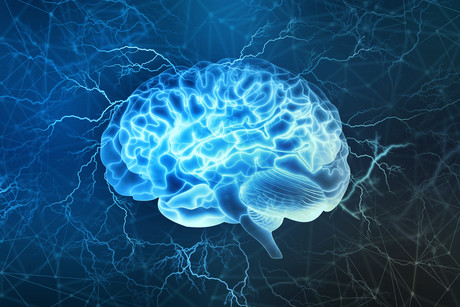Brain-stimulation implant could treat epilepsy patients

Australian researchers have developed a tiny device that electrically stimulates the brain and could one day be used to treat conditions such as epilepsy and Parkinson’s disease — without invasive open-brain surgery.
Researchers from the University of Melbourne, Florey Institute of Neuroscience and Mental Health, Royal Melbourne Hospital, Monash University and Synchron Australia have been working with an implantable device called a Stentrode. Measuring just 4 mm in diameter, the device has previously been shown to record brain signals, with the potential to control an exoskeleton in patients with paralysis.
Until now, it has never been proven that stimulating the brain from inside a blood vessel can achieve focal brain stimulation using a permanently implanted device. That all changes when the research team implanted Stentrodes into blood vessels in sheep, located adjacent to motor areas of the brain, and successfully achieved localised stimulation of brain tissue — all without open-brain surgery.
“Stimulation-induced responses of the facial muscles and limbs were observed, and were comparable to those obtained with electrodes implanted following invasive surgery,” the researchers wrote in the journal Nature Biomedical Engineering.
“A minimally invasive endovascular surgical approach utilising a stent-electrode array is an encouraging, safe and efficacious way to stimulate focal regions of brain.”
Co-author Dr Sam John said this marks the first time such an implant has been able to stimulate the brain without needing to perform open-brain surgery, with the work opening the way to making treatment for drug-resistant neurological conditions accessible to a greater number of people.
“This offers hope of less invasive treatments for the symptoms of conditions such as Parkinson’s disease, epilepsy, depression and obsessive compulsive disorder,” he said.
Lead researcher Dr Nick Opie said the work built on previous research, released in 2016, that showed Stentrodes implanted into blood vessels next to the motor cortex could pick up brain signals related to movement. The researchers plan to use the Stentrode to close the loop, making two-way communication with the brain possible.
“By adding the ability to speak to the brain using electrical stimulation, we have created a two-way digital communication device,” Dr Opie said. “In one application, the Stentrode could be used as a tool to record the onset of an epileptic seizure, and provide stimulation to prevent it.”
In one upcoming clinical trial, the recording Stentrode will receive and interpret neural signals and enable a person with motor neurone disease to control communication software. Eventually it is hoped this technology will be used to help all people suffering from paralysis to control computers, wheelchairs and exoskeletons.
“From within a blood vessel in the head, the Stentrode can pick up brain signals when people think about moving,” Dr Opie said. “These can be converted into commands that enable direct-brain control of computers, vehicles or prosthetic limbs. With stimulation, sensory feedback is possible, and people may be able to feel what they are touching.”
While future studies are required to determine the safety of stimulation across a range of intensities, previous research and literature currently supports the scientists’ hypothesis that a Stentrode may be a suitable alternative to invasive neural implants.
Follow us on Twitter and Facebook for the latest industry news. To receive our bimonthly magazine and weekly newsletters, click here.
Drug delays tumour growth in models of children's liver cancer
A new drug has been shown to delay the growth of tumours and improve survival in hepatoblastoma,...
Ancient DNA rewrites the stories of those preserved at Pompeii
Researchers have used ancient DNA to challenge long-held assumptions about the inhabitants of...
Bright nights may increase risk of death, Alzheimer's
Avoiding night light and seeking daylight may lead to reduction in disease burden, especially...




